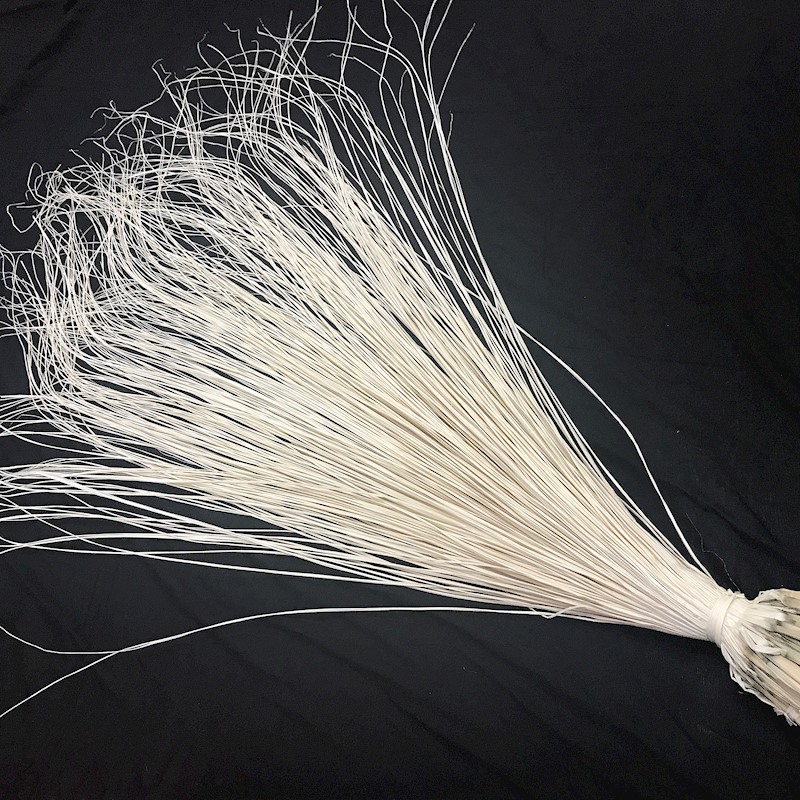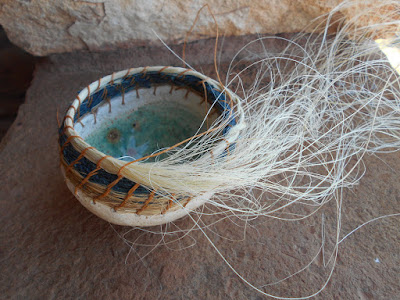Here's a link for purchasing my booklet on Japanese basketry embellishments through Blurb.com
My booklet shows how to put Japanese basketry embellishment knots and wraps on baskets. They are the same knots you see on my rocks. There is also a section on putting a knot on a rock. The booklet is 24 pages long, w/ color photos. With practice, you can put any of these embellishments on your favorite rocks.
If you read my previous post, you'll know that I've been really ill. But thanks to my doctors, I am slowly recovering. That's the good news. The bad news is that I might have to have immunotherapy infusions for the rest of my life. However, you didn't stop here to read about my health.
My newest woven piece has been very fun to work on. I was able to weave with new materials (to me) and weaving combinations. The first item was ramie cord, or Chinese nettle, that I purchased at the Japanese Garden gift shop in Portland. Same family as European stinging nettle, different species.
Have you heard of hinoki? It is Japanese cypress, or Chamaecyparis obtusa, which is a sacred tree.
Every year, Japanese woodworkers have planing competitions, in which they try to produce the thinnest piece of wood. Some are many times thinner than human hair! https://www.youtube.com/watch?v=2vINeD7nQ2
My fiber friend, Mari, was kind enough to give me some samples when I visited her studio. I decided to spin it for weaving. These were pretty thin pieces. Thinner than a piece of copy paper.
I
used both of these fibers, and more in making my newest 'hybrid
basket.' The center is pine needles woven around a resin base, followed
by ni'au blanc leaves. They are bleached white coconut leaves that you
might have seen on Tahitian headdresses.

Then I attached some leaves to the last row of coiling, and started twining. I used waxed linen, waxed cotton, more ramie cord, hemp cord, and horsehair. The last few rows are Perigord weave. (I learned this technique with Eva Seidenfaden's book, The Art of Basketmaking - The Périgord Technique and Tradition.
If you're not familiar with this weave, it's used in willow basketry. Here's a sample from the book.

At first, I was going to make my piece into a wall hanging. But then, I decided that I like it better as a decorative basket.






















































